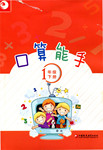题目内容
If you do someone a______________ (喜爱,恩惠) , you do something for them even though you do not have to.
练习册系列答案
 口算能手系列答案
口算能手系列答案
相关题目
题目内容
If you do someone a______________ (喜爱,恩惠) , you do something for them even though you do not have to.
 口算能手系列答案
口算能手系列答案